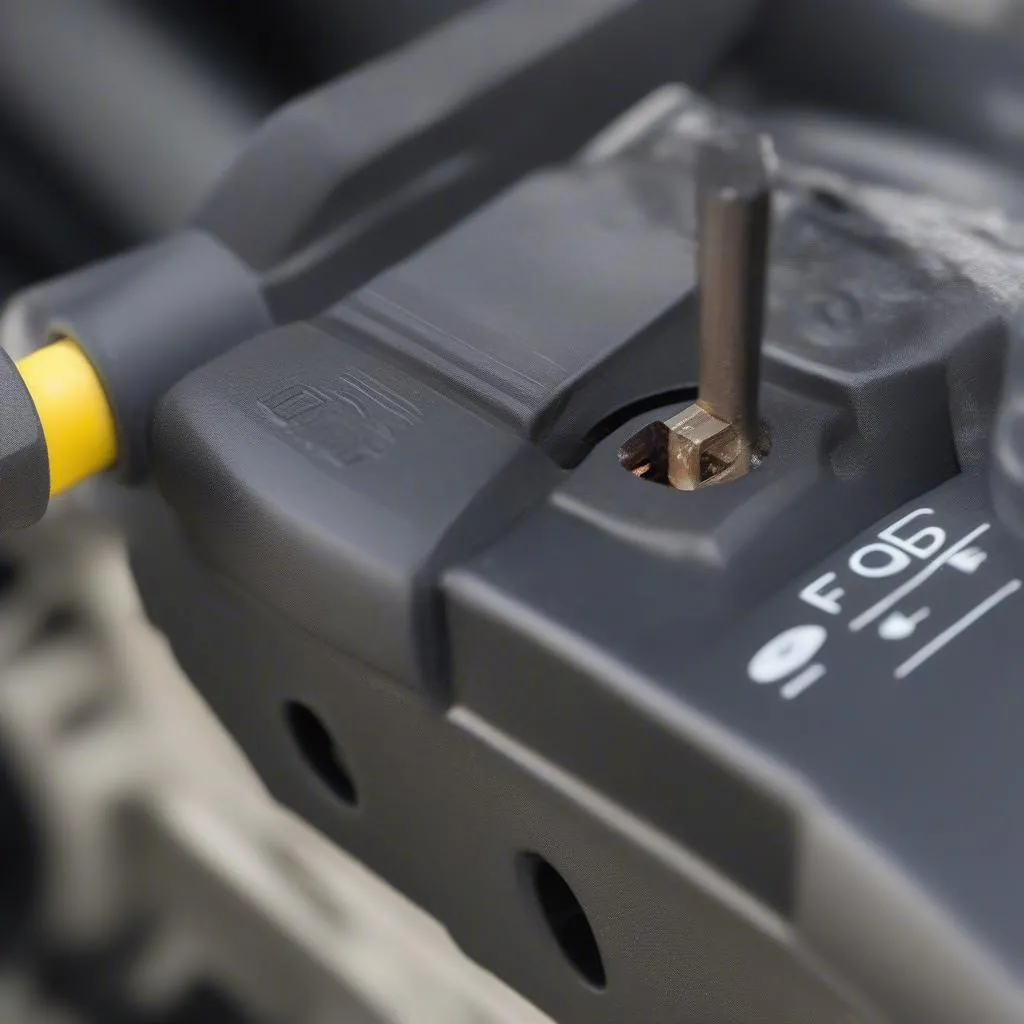Ever been in the middle of a job on your Ford Transit, ready to plug in your trusty diagnostic scanner, only to find that the OBD port isn’t responding? It’s a frustrating experience that can leave you feeling helpless. But don’t worry, you’re not alone! Many Ford Transit owners have encountered this issue, and we’re here to walk you through the most common causes and solutions.
What Does It Mean When Your Ford Transit’s OBD Port Isn’t Working?
The OBD (On-Board Diagnostics) port is a crucial part of your Ford Transit’s system, offering a gateway for diagnostic tools to communicate with the vehicle’s electronic control units (ECUs). When it malfunctions, it can hinder your ability to:
- Diagnose and troubleshoot engine issues: Your mechanic can’t access vital engine data, making it difficult to pinpoint the cause of any problems.
- Perform routine maintenance: Tasks like resetting service lights or checking emissions require a working OBD port.
- Modify vehicle settings: Some tuning or performance upgrades rely on the OBD port for configuration.
Understanding the Common Culprits Behind a Non-Functional OBD Port
Several factors can cause the OBD port on your Ford Transit to stop working. Here are some of the most frequent culprits:
1. Damaged OBD Port:
 Inspecting a damaged Ford Transit OBD port
Inspecting a damaged Ford Transit OBD port
Over time, repeated use and exposure to harsh conditions can wear down the OBD port, causing physical damage to the pins or socket. This can result in a loose connection, intermittent communication, or complete failure.
2. Blown Fuse:
A blown fuse in the OBD port’s circuit can also interrupt communication. This might occur due to a power surge or short circuit within the vehicle’s electrical system.
3. Faulty Wiring:
Wiring connections between the OBD port and the ECUs can become damaged or corroded, leading to communication disruptions. This can happen due to age, exposure to moisture, or rough handling during repairs.
4. ECU Problems:
In rare cases, the issue might stem from a faulty ECU itself. This might prevent the ECU from communicating with the OBD port, even if the port and wiring are in good condition.
Troubleshooting Your Ford Transit’s OBD Port: A Step-by-Step Guide
Now that we’ve identified the possible causes, let’s dive into practical troubleshooting steps you can take:
-
Inspect the OBD Port: Start by visually inspecting the OBD port for any signs of damage, corrosion, or debris. Make sure the pins are clean and properly aligned.
-
Check the Fuse: Consult your Ford Transit’s owner’s manual or online resources to locate the fuse responsible for the OBD port’s circuit. Check the fuse using a test light or multimeter, and replace it if it’s blown.
-
Test the Wiring: If the fuse is fine, you can test the wiring continuity between the OBD port and the ECU using a multimeter. This will help you determine if there are any breaks or short circuits in the wiring.
-
Consult a Professional: If you’re unable to identify the problem after performing these steps, it’s best to consult a qualified mechanic or an expert in Ford Transit diagnostics.
Common Questions & Concerns:
-
“What if my OBD port is damaged? Can I replace it?” Absolutely! You can find replacement OBD ports specifically designed for Ford Transit models at automotive parts stores or online. However, replacing it might require some technical expertise to ensure proper installation.
-
“I’m getting a “no communication” error on my scanner. What should I do?” This often indicates a problem with the OBD port, wiring, or even a faulty ECU. Following the troubleshooting steps above can help you narrow down the cause.
-
“I’m using a generic OBD scanner, could that be the issue?” While generic scanners are often compatible with Ford Transits, using a scanner specifically designed for Ford vehicles can improve accuracy and communication.
Enhancing Your Ford Transit’s OBD Port Lifespan
To extend the lifespan of your Ford Transit’s OBD port and avoid future problems, here are some helpful tips:
- Handle with care: Avoid excessive force when plugging and unplugging diagnostic tools.
- Keep it clean: Regularly clean the port with a compressed air duster to remove dirt and debris.
- Protect from the elements: Cover the port with a protective cap or shield when not in use to prevent moisture and grime buildup.
Wrapping Up
A non-functional OBD port can create major headaches for Ford Transit owners. But by understanding the common causes and following the troubleshooting steps outlined above, you can address the issue effectively. Remember, if you’re unsure or facing persistent problems, don’t hesitate to seek professional assistance. And if you need help with diagnostics or repairs, reach out to our team for a quick and reliable solution.
Contact Us:
For assistance with diagnostics, repairs, or any questions regarding your Ford Transit’s OBD port, feel free to contact our team via Whatsapp: +84767531508. Our expert technicians are available 24/7 to provide you with the support you need.
Share your experience! Have you encountered an OBD port issue on your Ford Transit? Share your story and solutions in the comments below. We’d love to hear from you!
Explore More: